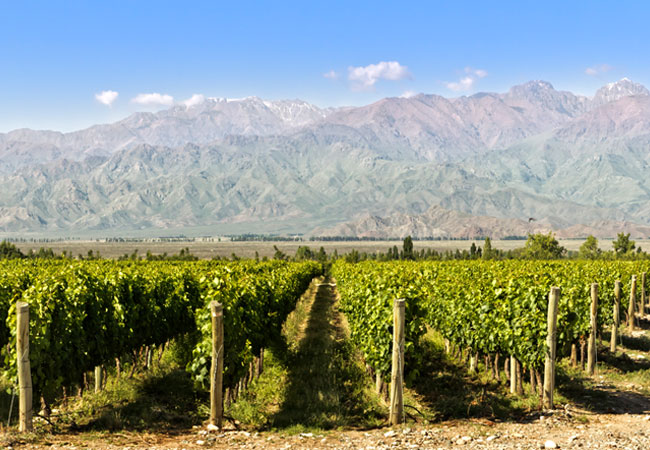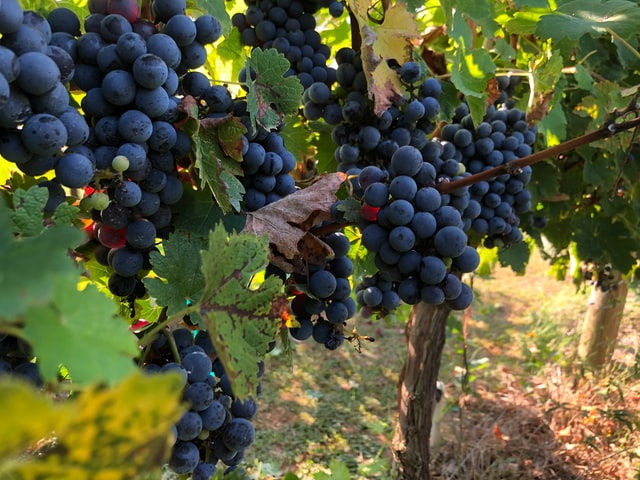THE WORLD OF WINE: South America
01/02/2024
We've spent a lot of time focusing on individual producers over the past few years, and while we still want to spend time looking at the people behind our favourite wines, we thought it might be time to broaden our horizons. In many of our wine dinners we pick a region or country as a starting point, and so for a while we'll follow that format. Starting big: South America.
In the rich tapestry of Southern Hemisphere viticulture, Argentina and Chile, alongside their lesser-explored counterparts, Uruguay, Brazil, even Bolivia... contribute to a diverse and rapidly evolving narrative of winemaking.
Argentina is probably the most familiar to drinkers in the UK, its wine story a fascinating narrative that unfolds across its diverse landscapes and deeply rooted in European immigration. The arrival of Italian and Spanish settlers in the late 19th century brought with them a winemaking heritage that has flourished in the sunny regions of Mendoza, Salta, and beyond. The country's terroir, defined in our imagination by the imposing Andes mountain range, is a pivotal force shaping the character of Argentine wines. The high-altitude vineyards, which can reach elevations of over 3,000 feet, contribute to the development of robust and intensely flavored grapes. Malbec is their emblematic varietal - despite being indigenous to South West France it is now synonymous with Argentina's winemaking identity, producing deeply-coloured wines full of notes of rich and ripe dark fruits.
Beyond Malbec, winemakers explore other grape varieties such as Cabernet Sauvignon, Syrah, and Bonarda (Argentina's second most widely planted grape, native to Italy, and one to watch!) Traditional winemaking methods co-exist with modern techniques, allowing for the creation of wines that showcase authenticity and innovation. Recent developments in Argentine wine have seen a surge in the production of high-quality white wines, particularly from regions like Salta and Patagonia, as winemakers explore the potential of grapes such as the fragrant Torrontés and (of course) Chardonnay.
Hot on Argentina's heels is Chile - a great spot for wine lovers with an eye to value. The country boasts a varied range of terroirs along the length of its Pacific coastline, from the cooler coastal valleys to the warmer inland regions. Chilean viticulture traces its roots back to the 16th century when Spanish conquistadores introduced vine cuttings, but it wasn't until the mid-19th century that the wine industry began to take shape, heavily influenced by French varietals like Cabernet Sauvignon, Merlot, and Carmenère. The country's geography (flanked by the Andes to the east and the Pacific Ocean to the west) provided natural barriers that shielded vineyards from pests and diseases - which has also made it easier for the country to foster sustainable and organic practices. Chile has stayed completely phylloxera free, and as a result a majority of Chilean vines are grown on their own roots (ie they are not grafted onto American rootstocks... which is usually the case in Europe!) Similar to Malbec in Argentina, the grape variety Carmenère (once thought extinct in Bordeaux and then mistaken for Merlot for years) has found a second home in Chile, evolving into a signature grape that delivers wines with spicy notes and ripe red fruits.
Recent years have witnessed a surge in cool-climate wine production, especially in regions like Casablanca and Leyda Valleys, where Sauvignon Blanc and Pinot Noir thrive. Pinot Noir is a hard grape to find at affordable prices... so this might be somewhere to look!
Moving further east, Uruguay, though often overlooked, has carved a niche for itself in the wine world. The Tannat grape - and yes, this one also originates from southwestern France - has become Uruguay's flagship variety, brought over by Basque immigrants in the late 19th century. Uruguay has a maritime climate that imparts a unique profile to Tannat, resulting in robust and tannic wines with a distinct sense of place.
Brazil is a relative newcomer to the world of wine, but I hear rumblings that suggest it is gradually beginning to make its mark. The Serra Gaúcha region, nestled in the southern state of Rio Grande do Sul, is the epicenter of Brazilian winemaking. The country's wine industry has roots in the arrival of Italian immigrants in the 19th century, bringing winemaking traditions with them. I can't lie - I have never had a Brazilian wine, but in such a large and diverse country I do have faith they'll have come up with something interesting!
Here at Brompton Wine we have been fans of TerraNoble for a long time (see our FOCUS ON.... if you are interested in a deep dive) and that's a good place to get started with South American wines.
CA1: the flagship variety of Chile and TerraNoble. Made with grapes from Los Lingues vineyard at the foothills of the Andes Mountains, fresh and refreshing with intense aromas of red fruits, slight herbaceous notes and red paprika.
Reserva Especial Carmenere: Deep ruby in colour, with aromas of black fruit and soft toasted notes. Big round tannins and a good structure on the palate.
Reserva Pinot Noir : A fabulously affordable Pinot Noir, with delicious fresh red fruits, soft tannins and vibrant acidity.
Gran Reserva Pinot Noir : This comes from the coolest area of Casablanca. Grapes were harvested by hand during the last week of February (remember - harvest is on the opposite side of the calendar in the Southern hemisphere!)
Feel like splashing out? We have some very special bottles from Bodega Catena Zapata - founded in 1902 and one of the most famous fine wine producers in Argentina. Their Mundus Bacillus Terrae Malbec comes from a very small 1.4-hectare plot within the famous Adrianna Vineyard, at almost 5,000ft elevation in the Gualtallary District of Mendoza. Their 2016, a cooler vintage, began its fermentation in concrete and completed in oak foudres before being matured in French oak for 18 months. 100% Malbec, tight, high acidity, lots of tannins - we recommend decanting! - with opulent and refined dark fruit.
We hope you'll explore South American wines - what we have in stock and beyond - and if you're reading this in time, then you can also join us for our wine dinner celebrating The Americas in general on March 12th! (You thought South America was broad... watch us try and sum up two continents in six wines... we will give it go!) Tickets and booking here.

